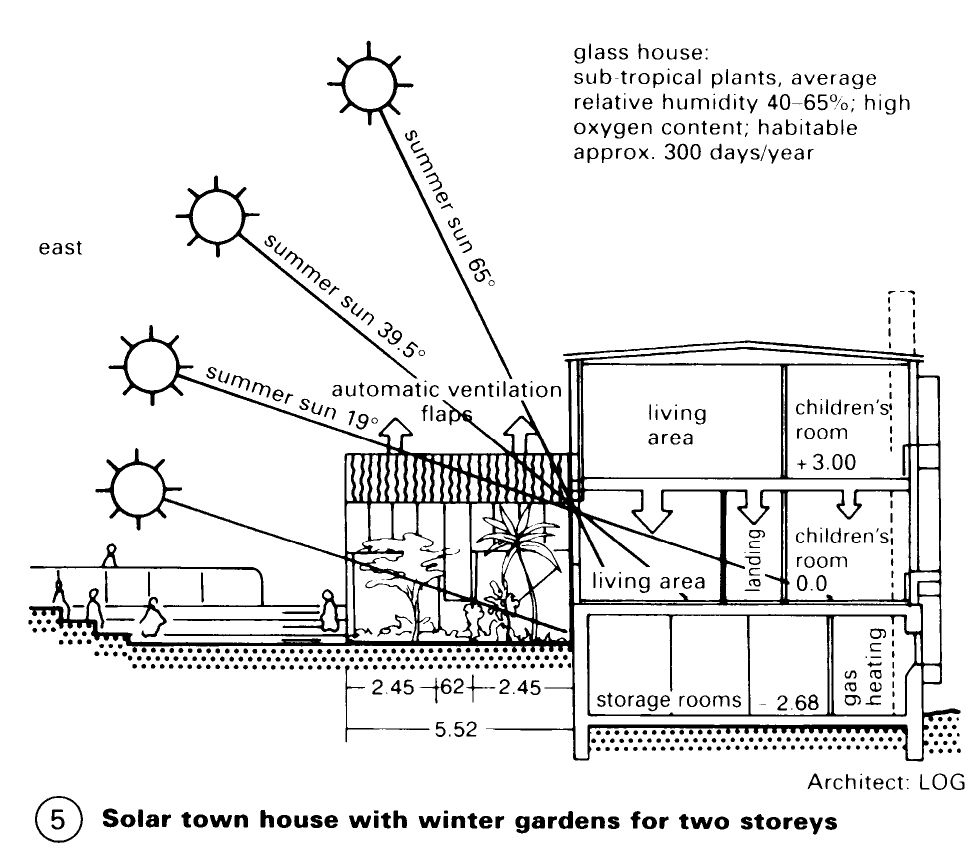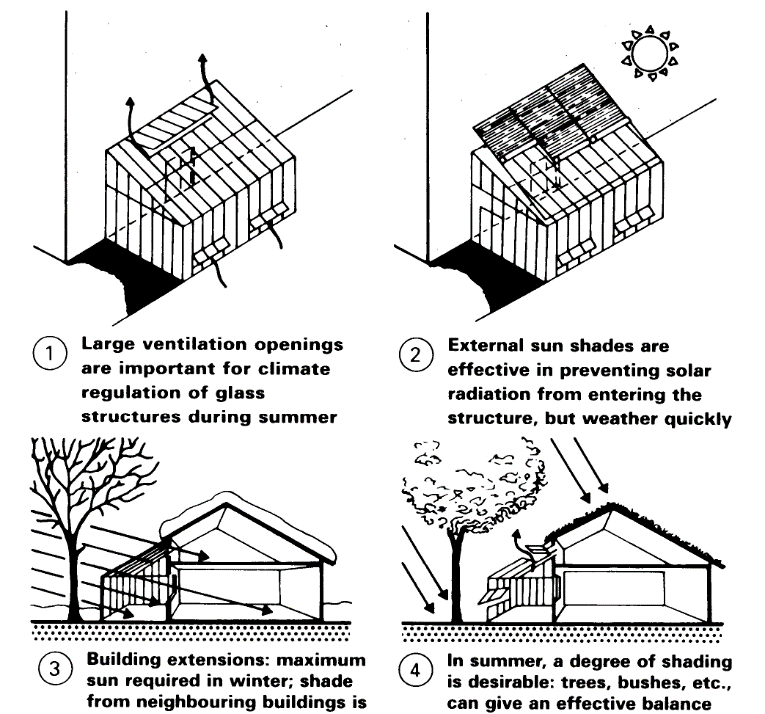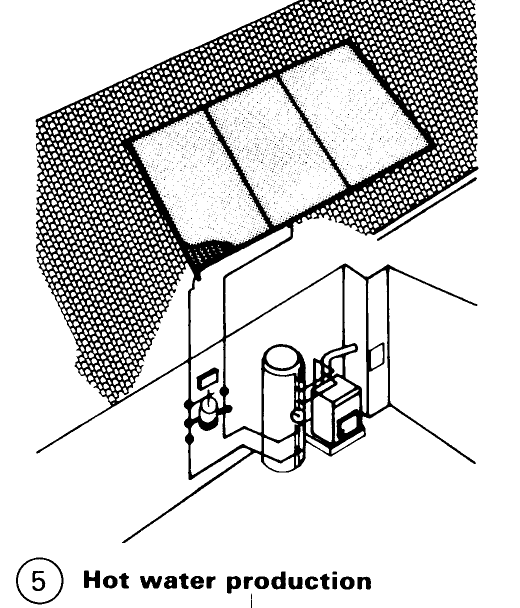Solar Architecture. Components. Use of Solar Energy
Essentially, economic considerations led architects and building developers to seek alternatives to the conventional fossil fuel sources of energy. Today, equal emphasis is placed on the ecological necessity for change. By means of energy conscious construction, the energy requirements of living accommodation can be reduced by around 50% in comparison to older buildings.

Energy balance of buildings.Solar energy is available free of charge to every building. Unfortunately, in many climatic areas, solar radiation is very low, so that other forms of energy must be used for room heating, hot water, lighting and for the operation of electrical appliances.
The greatest energy losses from a building arise due to the conduction of heat through windows, walls, ceilings and roofs.

Considerations of energy conscious construction. There are three fundamental points which lead to a considerable reduction in the energy requirement of a domestic building:
1. Reduction of heat losses
2. Increase in energy saving through the use of solar radiation
3. Conscious efforts by users to improve the energy balance
The choice of building location itself can reduce the heat losses from a building. Within a small area in a region, conditions will vary; e.g. wind and temperature conditions vary with the altitude of a building site.
Relatively favourable microclimatic conditions result on south-facing slopes when the area of ground is situated on the upper third of the slope but away from the crest of the hill.

The shape of the building plays an important role in terms of energy conscious construction. The outer surface of the building is in direct contact with the external climate and gives up valuable energy to the outside air. The design of the building should ensure that the smallest possible external surface is presented to the outside air in relation to the volume of the building. The shape to be aimed for is a cube, although a hemisphere in the ideal case. However, this ideal assumption applies only to a detached house.
Organisation of the ground plan. In the passive utilisation of solar energy, the heat is utilised through direct incident radiation and heat storage in specific structural components such as walls and floors.

Because of the conditions under which solar energy is used passively, the arrangement of the ground plan necessarily follows a particular logical layout. The continuously used living and sleeping accommodation should be south-facing and provided with large window areas. It is useful to provide glazed structures in these living and sleeping areas. There are three important reasons for this:
1. Extension of the living area
2. Gain in solar energy
3. Provision of a thermal buffer zone
The little-used low-temperature unheated rooms, with low natural light requirements should be north-facing. They act as a buffer zone between the warm living area and the cold outside climate.

Use of solar energy. In the use of solar energy, a distinction is drawn between the active and passive use of solar energy.
The active use of solar energy necessitates the application of equipment such as solar collectors, pipework, collector vessels circulation pumps for the transfer of the solar energy. This system entails large investment and maintenance costs which must be recovered solely by saving in the cost of energy. As a result, such systems cannot be operated economically in single family houses.

The passive use of solar energy necessitates the use of specific structural components as heat stores, such as walls, ceilings and glazed units. The efficiency of this system depends on specific factors:
1. Climatic conditions - mean monthly temperature, solar geometry and incident solar radiation, hours of sunshine and level of incident energy radiation
2. Method of using the solar energy - indirect usage, direct usage
3. Choice of materials - absorption capability of the surface and heat storage capability of the materials
Solar energy. About 1.5m2 of collector area and about 1001 volume of water in the storage tank is needed per person in the household. – (1) A 30-pipe solar collector with an absorption surface of 3m2 is needed to produce hot water for a 4-person household. The collector will produce about 8.5-14.0kWh solar heat per day, depending on the amount of sunshine, i.e. enough to heat 200-2801 of water. – (5) Within the foreseeable future, the sun cannot provide enough power for heating, so solar heating installations still require a conventional heating system.


There are two different technologies. Solar heat: thermal collection of solar energy using collectors (equipment which catches and accumulates solar thermal energy). Thermal energy is used to heat water. Solar electricity: photovoltaics is the direct conversion of the sun's rays into electrical energy (direct current) with the help of solar cells.
Date added: 2023-01-05; views: 624;
